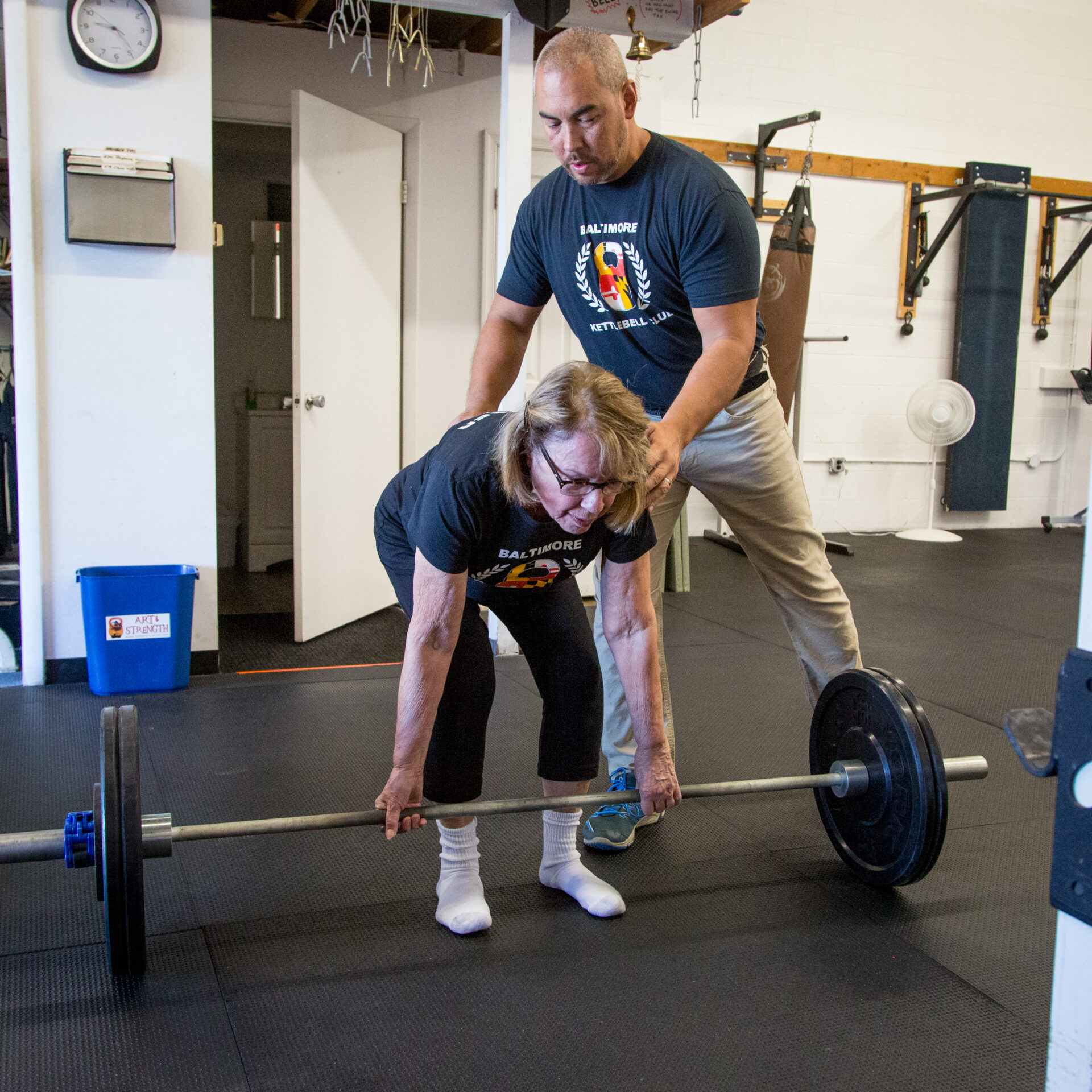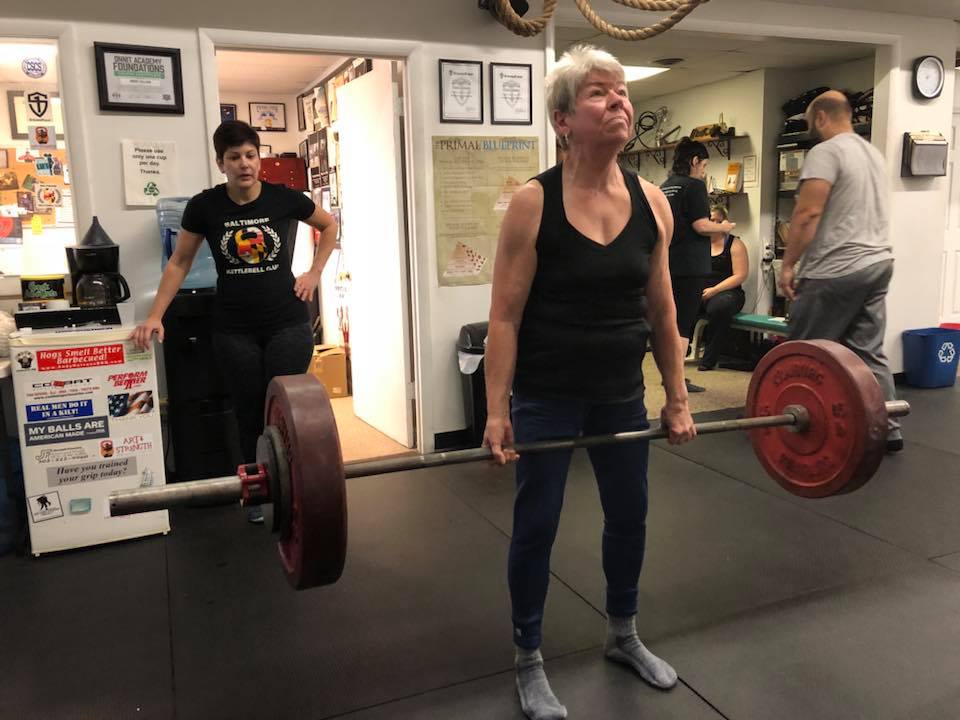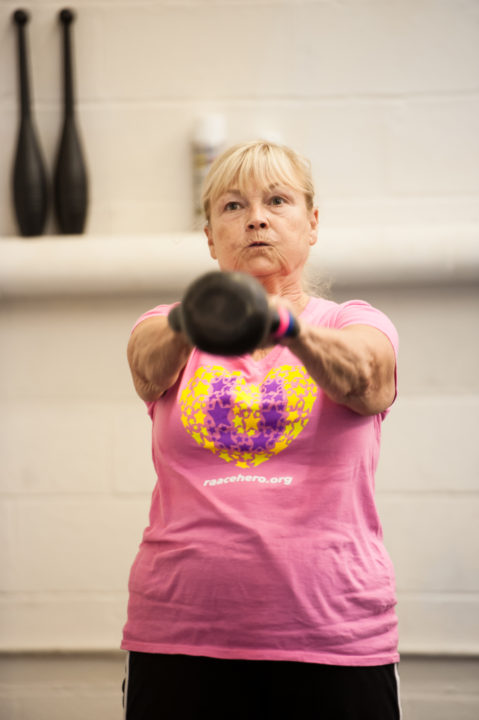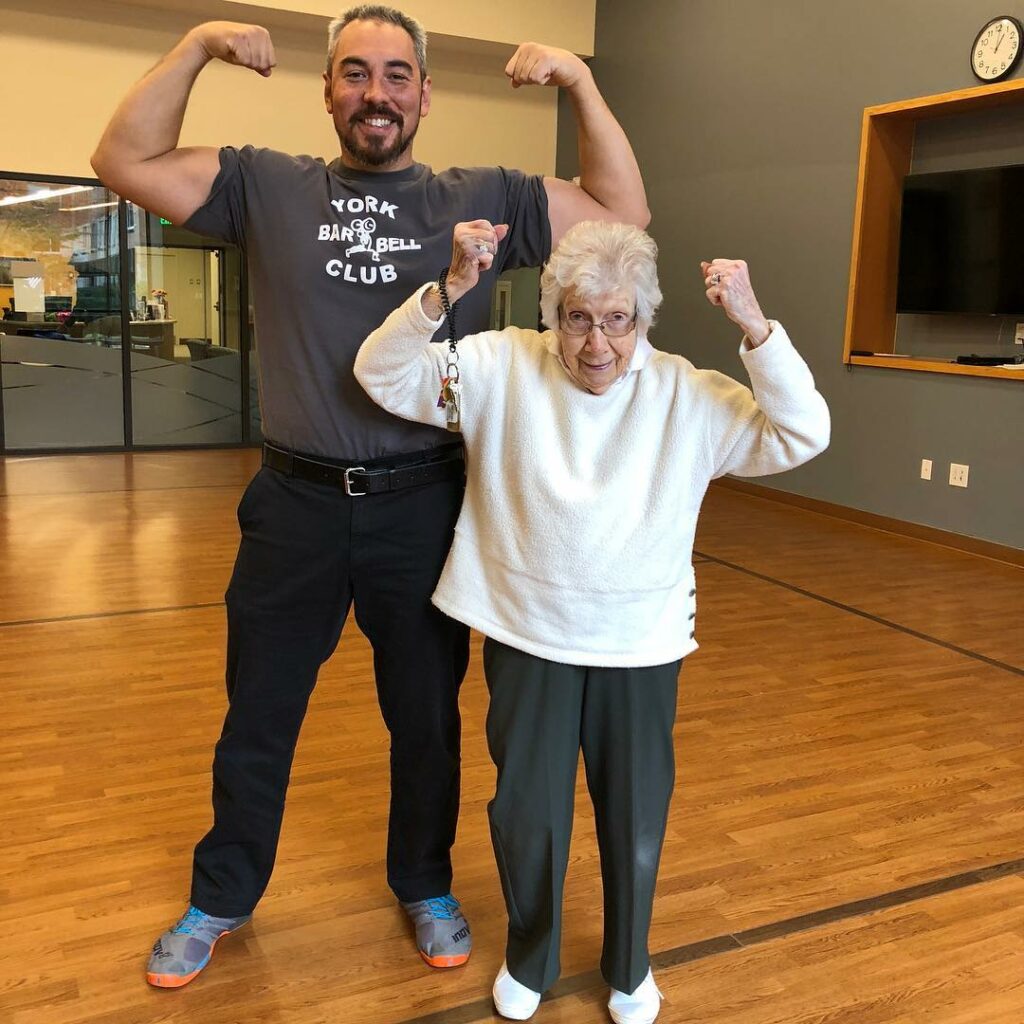
After more than 10 years of strength training senior citizens, countless hours of personal research, constant refinement of our approach; the Strength After Sixty has been approved for clinic research at Towson University!
We are now accepting applications for the study starting in April!
Here’s what you need to know:
Research participants much meet the following criteria:
- Over 60 years old
- Inactive in any other strength training program
- Willing to commit to 2-3 weekly workouts for a minimum of 12 weeks
Participants will receive the following benefits:
- Free clinical testing for bone density (DXA), balance / fall risk, cardiovascular health and physical performance
- Comparative analysis to see where individuals rank among their age group
- Deeply discounted training rates!
For enrollment into the SAS Study, fill out the form below…
My name is Dan Cenidoza. I started my fitness career working with senior citizens at Oak Crest Retirement community back in 2006. At the time I was competing in Strongman competitions and I took the job for the experience, not because I wanted to work with older adults.
To my surprise, what I found was that I really enjoyed working with this age group. Not only could I see that I was making a difference in their lives, they were really appreciative of it, too.
I once had a 92 year old lady give me a written testimony that said I was helping “to extend her life” Wow! That’s not a compliment you hear everyday…
I also found that the functional-type exercises we use in strongman could be scaled / modified for the senior population and produced far greater results than what is typically done in senior fitness training. In fact, we’ve had at least 5 people increase their bone density (as measured by DEXA scans).
There are two things particularly difficult about training these folks. The first is getting them to “buy in” to the process. This generation did not grow up with health clubs and home gym equipment and strength training was not promoted in the mainstream like it is today. Women especially were not taught that they could be physically strong, so they hold preconceived notions about strength training that can be tough to overcome.
The second difficulty in training seniors is finding them. Not only am I not in a position to travel to senior communities, but contemporary means of advertising (e.g. online) are not the most effective. That is why I am hoping to recruit the children of such folks to bring mom and dad to me.
So if you’ve got an aging parent (or perhaps you ARE an aging parent), reach out to me about training. Bring mom in to talk to me about what I do and how strength training could benefit her.
***Exciting news!!! The SAS program has been approved by Towson University for a pilot study! What this means to participants is
-Dan Cenidoza
dan@baltimorekettlebellclub.com
410-657-2307
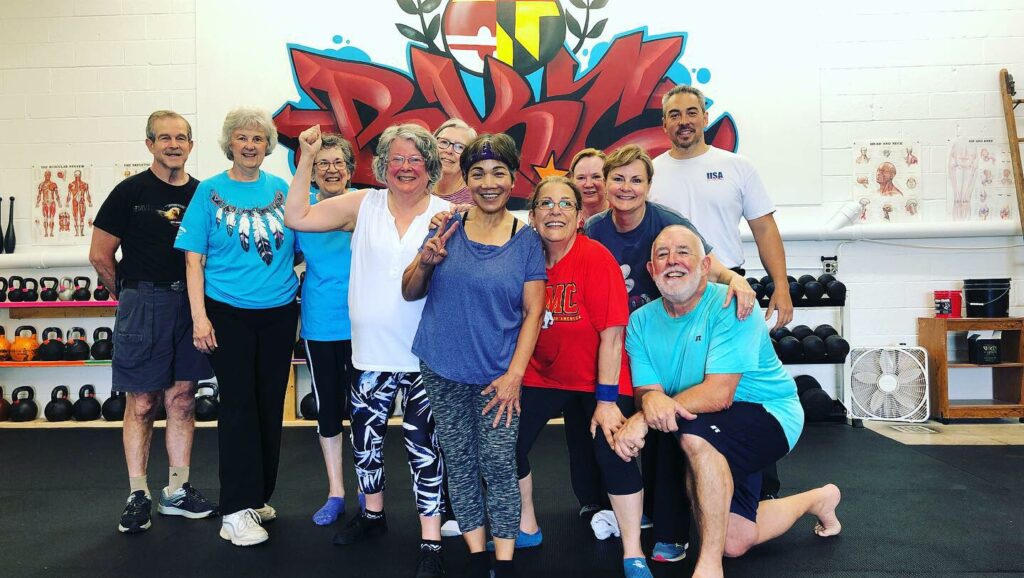
Sign Up for the SAS Study!
S&C Class Schedule:
Tuesday & Thursday: 9am; Friday: 4:30pm
(These classes are not just for 60+ year old’s, but for anybody who plans to be 60+)
Personal Training
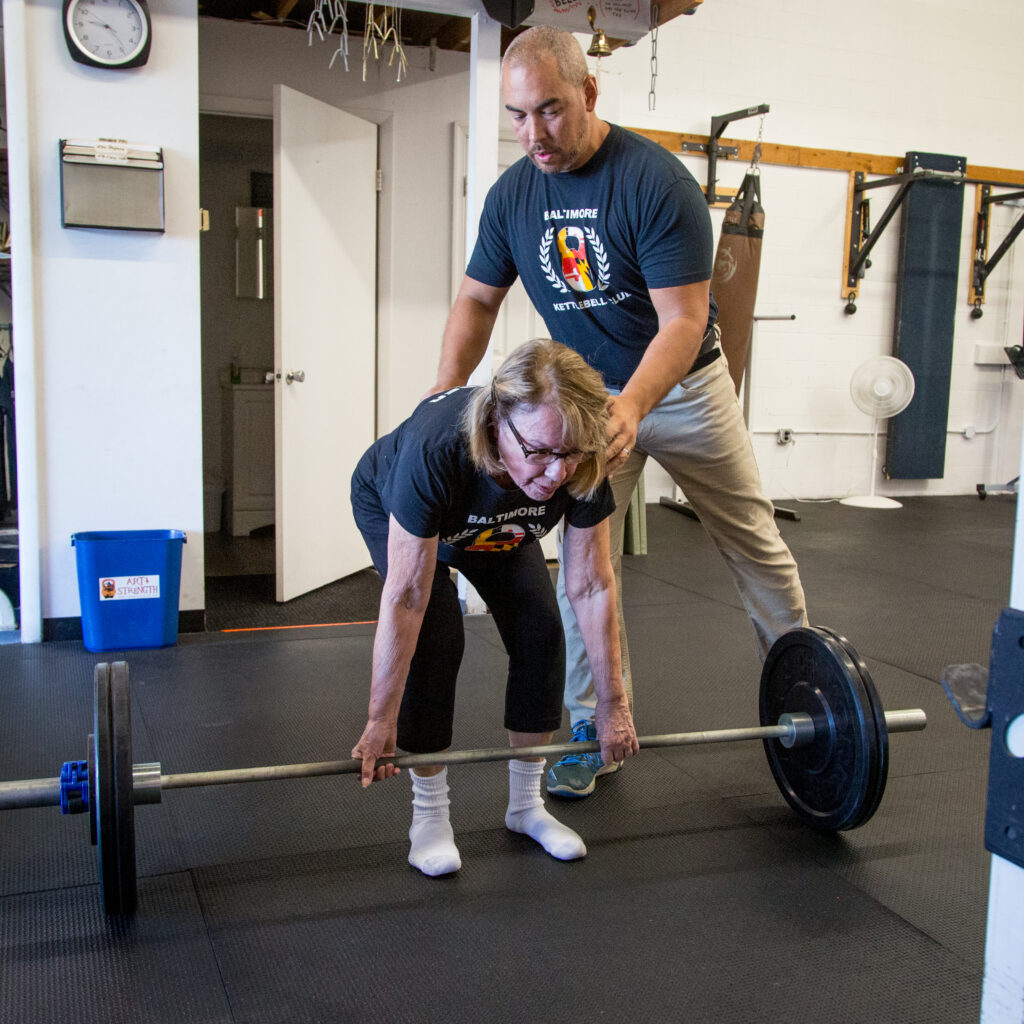
Mary Etts, 76, learning to lift 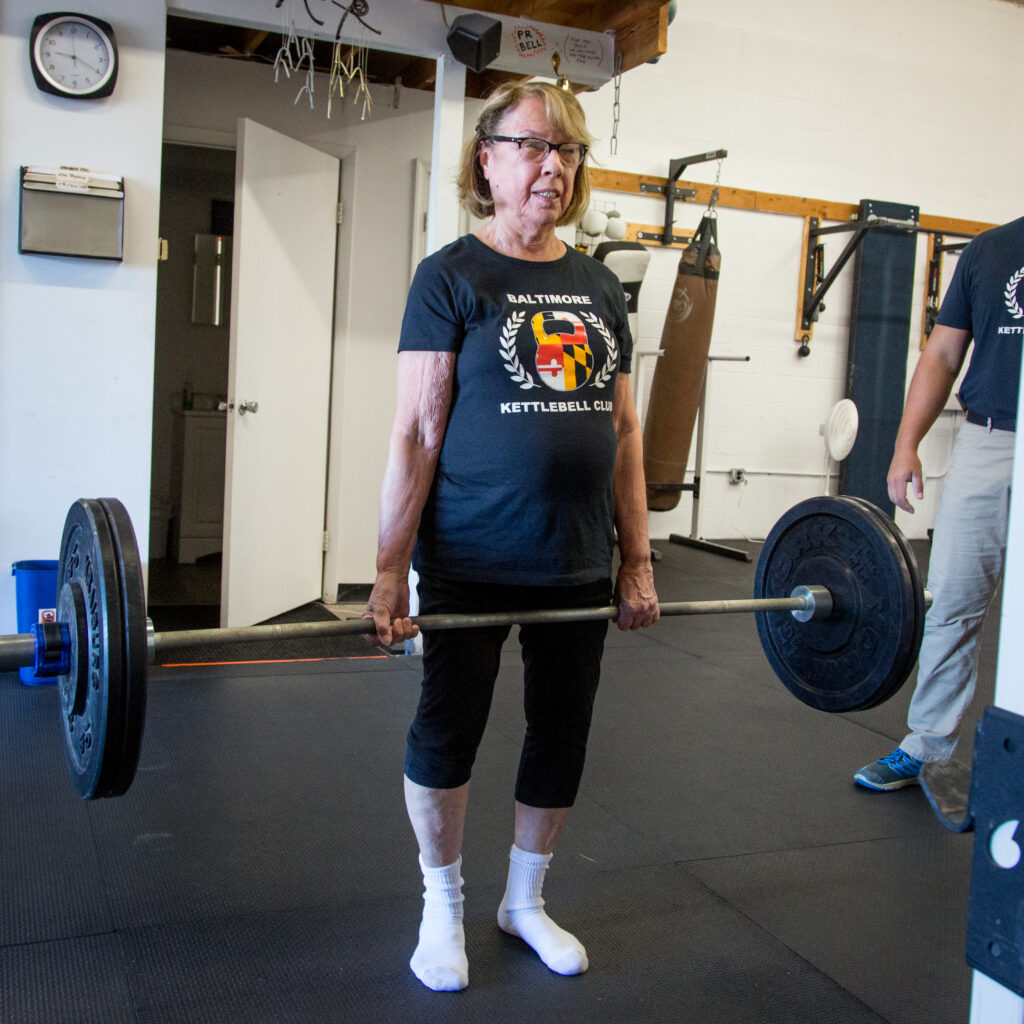
This exercise builds stronger bones!
Personal Training is another option for seniors looking to get stronger. Most everybody over the age of 50 has certain limitations that may require a modified training program. With the ability to work 1 on 1 with an experienced trainer, you can account for those individual circumstances.
For more information on Personal Training click here

SAS Study enrollment
Strength Training for Older Adults and Senior Citizens
Resistance To Frailty
The topics of osteoporosis, sarcopenia, and the frailty syndrome are extremely important for anyone over the age of 60 or anyone planning to be in the future. This article will look at the need for preventative measures, the means to healthy aging of the musculoskeletal system, and the steps you can take to ensure that you will live out your years on this earth strong and physically capable.
Osteoporosis & Sarcopenia
Osteoporosis is a well-known condition involving decreased bone density with aging that most people are familiar. Sarcopenia is a disease of muscle loss and weakness that is the lesser known evil-twin of osteoporosis but just as important to understand. These two conditions comprise the public health problem known as frailty syndrome, which has unfortunately become increasingly common in aging adults.
Frailty Syndrome
Frailty syndrome is technically defined as “a decline in the functional reserves with several alterations in diverse physiologic systems, including lower energy metabolism, decreased skeletal muscle mass and quality, and altered hormonal and inflammatory functions.”
For a more user-friendly definition picture in your mind a stereotypical “old person.” You think of little gray haired men and women who are hunchbacked and have trouble walking. They are too weak to even stand, and look as if they would shatter with a minor fall. That image is what many of us now associate with the word “old.” No one wants to become the embodiment of this image as we age.
We cannot slow the passing of the years, our chronological age, but we do not have to succumb to frailty. Strength training is not just for the young. You can become stronger and more resilient in your 60’s, 70’s, 80’s and even 90+. Strength training is arguably more important for the aging person and absolutely essential for healthy aging.
Frailty is what makes falls the leading cause of both fatal and nonfatal injuries among older adults.1 Falls result in disability, functional decline and reduced quality of life. Fear of falling can cause further loss of function, depression, feelings of helplessness, and social isolation.
Financial Toll
The financial cost of frailty is huge. In a 2002 study, the cost of an individual fall averaged between $14,306 and $21,270.3 The cost increases rapidly with age and could easily exceed most peoples retirement savings. In 2013, the total direct medical costs of fall injuries for people 65 and older, adjusted for inflation, was $34 billion, and is expected to reach $54.9 billion by 2020.
Fortunately there are steps we can take to avoid the bleak and costly aging process. Physical exercise is well recognized by both the layperson and the medical community as an essential part of a healthy lifestyle. Doctors will tell you the importance for “weight bearing” exercise when it comes to osteoporosis and sarcopenia.
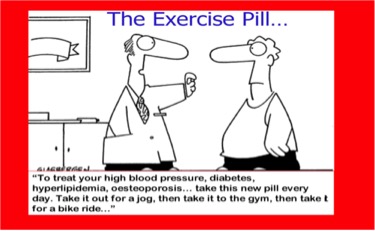
Exercise Prescription
Unfortunately, there are only a very small percentage of physicians who actually know how to properly prescribe and program weight bearing, bone strengthening exercises. Physicians are trained to diagnose and treat disease, but most do not have the expertise to write exercise prescriptions or coach weight training techniques. It is ironic that exercise, one of the most powerful disease-preventing modalities, is not taught in medical education.
In my opinion as a strength coach and senior fitness professional, that lack of basic education is why there seems to be lack of information coming from the medical community about effective weight-bearing exercise.
If you look at the Surgeon Generals Report on Bone Health and Osteoporosis, strength training is underemphasized and casually mentioned along other activities such as walking, dancing and gardening. No one ever seems to mention that those who have the strongest muscles (such as weight lifters and powerlifters) also have the most dense bones, and never succumb to osteoporosis or sarcopenia.
It’s understandable why a physician who is not also a trained strength & conditioning specialist would not elaborate on such a topic, but most will confirm that loading the axial skeleton is what increases osteoblast activity, resulting in bone production. Because of the body’s hardwired adaptive response to loading, the heavier the load is, the stronger the bone.
However no doctor in their right mind would tell their patient to go lift the heaviest weight they possibly can, especially if that person was already showing the signs of frailty syndrome.
Senior Fitness

I have the unique position of being strongman and a strength coach who has worked in senior fitness for the last 10+ years. Senior fitness was my first paid position as a fitness professional, and I still teach a weekly class at the same retirement community at which I started my career.
My work in senior fitness has highlighted the importance of the role strength training plays in health and longevity and countering the negative effects of frailty syndrome. I have seen people of 70, 80 and 90 years of age who, because of regular strength training, do not fit the characteristics we associate with “old.”
I also have documentation of post-menopausal women (those most at risk for osteoporosis) I have coached achieving increased bone mineral density measured by DEXA scans. I know how to program advanced powerlifting techniques and scale them to the senior population, and as much as I’d like to say “follow this exercise program to stronger bones” there are many things to consider in exercise prescription.

- Pauline Horn 82lb squat
There are obvious things such as which exercises for how many sets and reps, but there are more complex things like needs analysis, individual body mechanics, safety and technique.
Just as a doctor would not write a drug prescription to a patient he has never met, I cannot write a blanket training program to cover everyone reading this article.
That being said, in part 2 of this article, I will cover some general techniques and principles for strength training an aging population. With the proper application of resistance training our potential for strength is limited only by the number of years we have left to train. Exercise is an individual responsibility and those who strive for strength will achieve it at any age.
Survival truly is, of the strongest.
-Dan Cenidoza
Strength After Sixty Special:
Join our research study and receive discounted training rates as well as free testing from Towson University. Tests include DEXA bone mineral density, balance, flexibility and other functional tests.
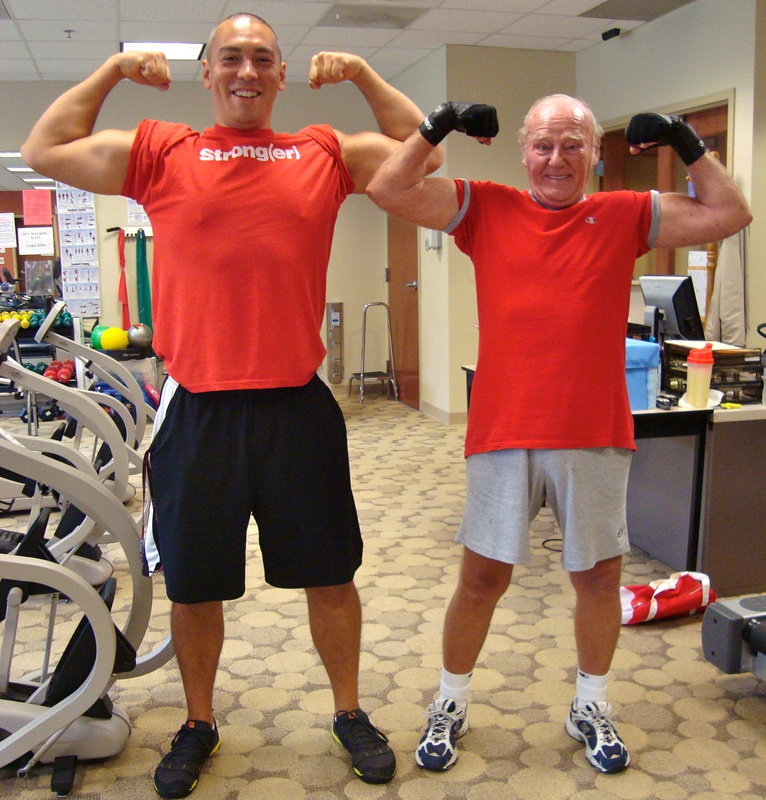
Strength
It means something different to you than it does to me. Strength After Sixty is more meaningful. It matters. It adds vigor to your step and years to your life. It’s the best form of prevention there is. It’s retirement planning that anyone can do, and like money, having strength is always a good thing!
Our program has been extremely successful in making older people strong(er). We have documented cases of improvement in bone density via DEXA scans. Our focus in this class will be on mobility and strength training – I want you to be able to get up and go, and live a long, healthy, independent life.
-Dan Cenidoza
